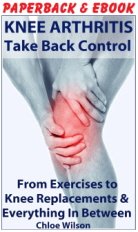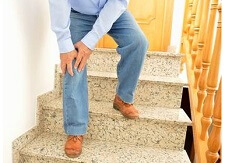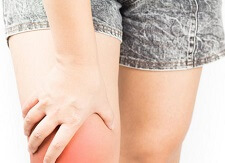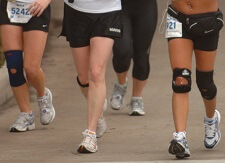- Home
- Knee Arthritis
Arthritis Pain in Knee
Written By: Chloe Wilson, BSc(Hons) Physiotherapy
Reviewed by: KPE Medical Review Board
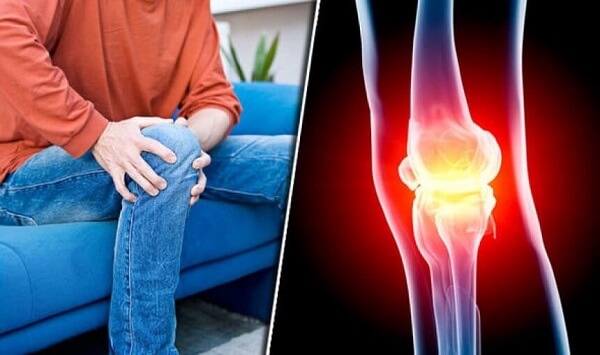
Arthritis pain in knees is one of the most common knee problems.
Indeed, arthritis is the leading cause of disability in the US, and affects millions of people worldwide.
Arthritis simply means "inflammation of the joint" and is characterised by degenerative changes in the bones and cartilage in the knee joint.
Knee arthritis may affect the knee joint between the thigh and shin bones, or the patellofemoral joint between the kneecap and the front of the knee. In some cases, knee arthritis will affect both joints.
Here we will start by looking at what is actually going on in the knee with arthritis and the different types. Then as you continue through the arthritis pain in knee section you will find lots of information such as the
- Common Causes: and risk factors for knee arthritis
- Common Symptoms: and how they vary
- Arthritis Stages: how it progresses
- Treatment Options: including exercises, injections, braces and natural remedies.
What is Knee Arthritis?
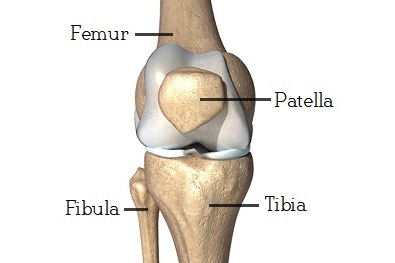
There are two different types of knee arthritis caused by either wear and tear or inflammation.
The knee joint is made up of three bones, the femur (thigh), tibia (shin) and patella (kneecap) which form 2 separate joints. These are
- Tibiofemoral Joint: knee joint between tibia and femur
- Patellofemoral Joint: kneecap joint between patella and femur
The ends of the knee bones are covered by thick layers of cartilage.
Cartilage is a thick, spongy material that lines
the joint providing lubrication and cushioning, which allows the knee to
move smoothly and painlessly. It also works as a shock absorber and ensures that the forces going
through the knee during daily activities are spread evenly throughout the joint.
Arthritis pain in knees develops when the cartilage thins and wears away and bony bumps known as spurs develop. This results in bone-on-bone contact which causes knee arthritis pain, stiffness and inflammation.
Types of Arthritis Pain in Knee
There are two main types of arthritis in the knee:
- Osteoarthritis: where there is degeneration of the bones
- Rheumatoid Arthritis: where there is inflammation in the joint
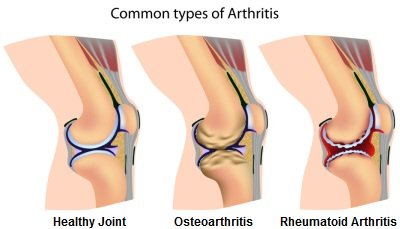
1. Osteoarthritis Of The Knee
Osteoarthritis is commonly known as “wear and tear” knee arthritis. Osteoarthritis is by far the most common cause of arthritis pain in knees affecting approximately 16 million people worldwide. Usually osteoarthritis of the knee is related to, but not caused by aging, most commonly affecting people over the age of 65. Other common terms used are "degenerative arthritis knee" or "arthrosis".
Check Out Our Book
All the info you need about knee arthritis, top tips, exercises & loads more.
Rated 4.4/5
Find Out More
In a normal, healthy knee joint, there is a reasonable sized gap between the bones (tibia and femur) due to a thick layer of cartilage and lubricating fluid.
The surface of the bones is nice and smooth and as the knee bends and straightens, the joint moves easily and painlessly due to the cushioning from the cartilage.
With osteoarthritis of the knee, a few things happen. The cartilage thins and as a result the bone underneath begins to thicken and lays down new bone to try and protect itself.
These spurs stick up so the joint surfaces are no longer smooth but are
all bumpy. They are known as osteophytes or knee bone spurs.
As a result of these changes, there is less space
between the bones. This means that as you use the knee, you can get bone
rubbing on bone, causing arthritis pain in knee joints. The bone spurs can also limit
the amount of movement in the knee leading to stiffness, a really common problem in knee arthritis.
2. Rheumatoid Arthritis
Rheumatoid arthritis pain in the knees is less common and is categorised as a chronic, systemic inflammatory disorder:
- Chronic = long term
- Systemic = throughout the body
- Inflammatory = swelling
Rheumatoid arthritis causes inflammation as well as excess fluid in the joints and often leads to destruction of the cartilage. Joints become swollen, painful and warm, and movement is limited by resultant stiffness.
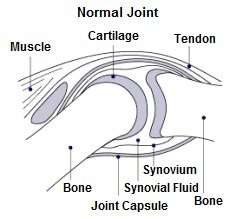 |
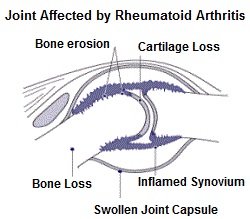 |
Rheumatoid arthritis is less common than knee osteoarthritis and its incidence is actually declining. Rheumatoid arthritis currently affects around 1% of the world’s population and is three times more prevalent in women than men.
Rheumatoid arthritis usually occurs between the ages of 40-50. It will usually affect a number of joints, especially the hands, feet and neck and arthritis pain in knees is a common feature. Symptoms of knee rheumatoid arthritis typically come and go, known as “flare ups”. One of the most distinguishing features of rheumatoid knee arthritis is morning joint stiffness which eases with movement.
Locations of Knee Arthritis
Arthritis pain in the knees can develop at either the joints of the knee, sometimes both:
1. Tibiofemoral Arthritis
Tibiofemoral arthritis tends to be what people typically think of when they talk about knee arthritis. It affects the tibiofemoral joint with damage to the cartilage lining the bottom of the thigh bone and the top of the shin bone.
Tibiofemoral arthritis pain in knee tends to be felt deep inside the knee joint and tends to be associated with knee stiffness, weakness and swelling. LEARN MORE >
2. Patellofemoral Arthritis
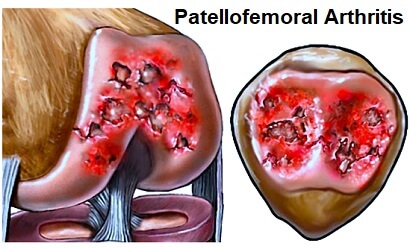
Kneecap arthritis affects the patellofemoral joint, where the kneecap meets the thigh bone. The patella sits in the patellar/trochlear groove on the front of the femur and glides up and down as the knee moves.
In patellofemoral arthritis, there is damage to the cartilage on the back of the kneecap and the cartilage lining the patellar groove. Pain tends to be felt at the front of the knee can is worse with activities such as climbing stairs, getting up from sitting and squatting. LEARN MORE >
How Can I Treat Knee Arthritis?
Whilst there is no definitive cure for arthritis pain in knees, there is a lot that can be done to help reduce pain and improve function such as exercises, injections, knee braces and physical therapy. As we continue through the arthritis pain in knee section, you can find out lots more in the following articles:
- Arthritis Causes: The main causes of arthritis
- Symptoms & Diagnosis: The symptoms of OA and how is it diagnosed
- Stages of OA: How the disease and symptoms progress
- Treatment Options: 15 great ways to reduce arthritis knee pain
- Diet For Arthritis: Which foods to avoid and which foods can help
- Natural Arthritis Remedies: Including supplements, homeopathy and alternative therapies
- Knee Arthritis Surgery: Replacing an arthritic knee with a new one
- Beat Knee Arthritis: Everything you need to know in a handy book
Related Articles
Last Updated: May 21st, 2025
Next Review Due: May 21st, 2027
